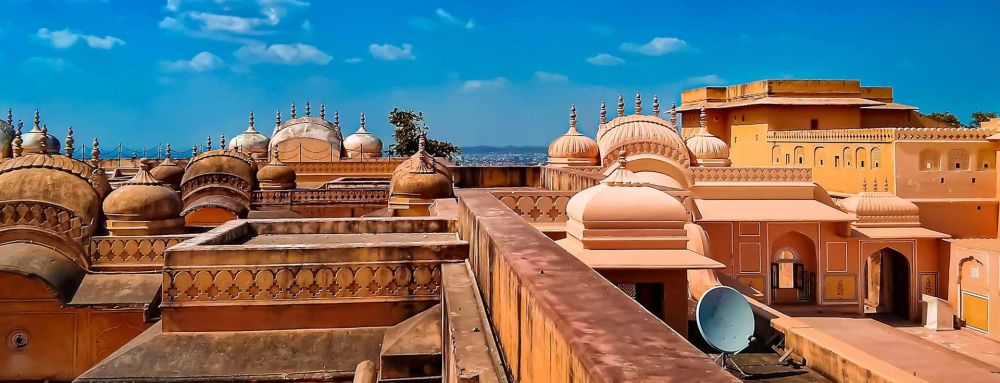

Nahargarh Fort, perched on the rugged Aravalli Hills overlooking Jaipur, stands as a testament to the city's glorious past. The fort was originally named Sudarshangarh but was later called Nahargarh, which means 'abode of tigers'. Built in 1734 by Maharaja Sawai Jai Sing II, the founder of Jaipur, Nahargarh Fort was primarily a defensive fortification for the city.
The fort has seen several historical events unfold within its walls. It has been a witness to treaties with the Maratha forces rampaging through Rajasthan in the 18th century. Although it never directly came under attack during the course of its history, Nahargarh Fort had its strategic importance, forming a strong defense ring for the city along with Amer Fort and Jaigarh Fort.
The Indo-European architectural style of Nahargarh Fort is a remarkable illustration of the aesthetic sensibilities of the Rajputs. One of the fort's main attractions is the Madhavendra Bhawan - which was the summer destination for the royal family and boasts beautifully decorated suites for the king and his twelve queens.
Tourist interest in Nahargarh Fort gained momentum in the early 20th century when India started to establish itself as a destination for heritage tourism. The fort's proximity to Jaipur, known as the Pink City, made it accessible to travelers who came to explore the city’s rich culture and history.
With the resurgence of interest in royal heritage and the government’s efforts to promote Rajasthan’s palaces and forts, Nahargarh became a prime tourist attraction. Visitors are drawn to its mix of Rajasthani and European architectural styles and the stunning views of Jaipur it offers.
With advancements in tourism infrastructures, such as the development of world-class roads leading up to the fort and the establishment of visitor centers, the fort has seen a steady increase in footfall. Activities such as guided tours, night-time visits, and adventure sports nearby have also been introduced to cater to the varied interests of tourists.
Nahargarh Biological Park, a short distance from the fort, was created to provide visitors with the chance to observe wildlife in its natural habitat, further adding to the fort’s appeal as a tourist destination.
Lately, Nahargarh Fort has become a choice venue for cultural events, art installations, and open-air concerts, which align well with current tourism trends favoring experiential activities. The fort has also been prominently featured in numerous Bollywood films, which has greatly increased its allure to domestic tourists.
The fort is open to the public all year round and it's recommended to visit during the cooler months of October to March. Sunset views from the fort are particularly sought after, offering a panoramic vista of the city bathed in golden hues. There are also a number of eateries inside the fort complex where visitors can enjoy traditional Rajasthani cuisines.
In conclusion, Nahargarh Fort has evolved from a historical fortress to a distinguished destination that celebrates Rajasthan's vibrant culture and history. It's a place where the echoes of the past meet the lively beat of the present.